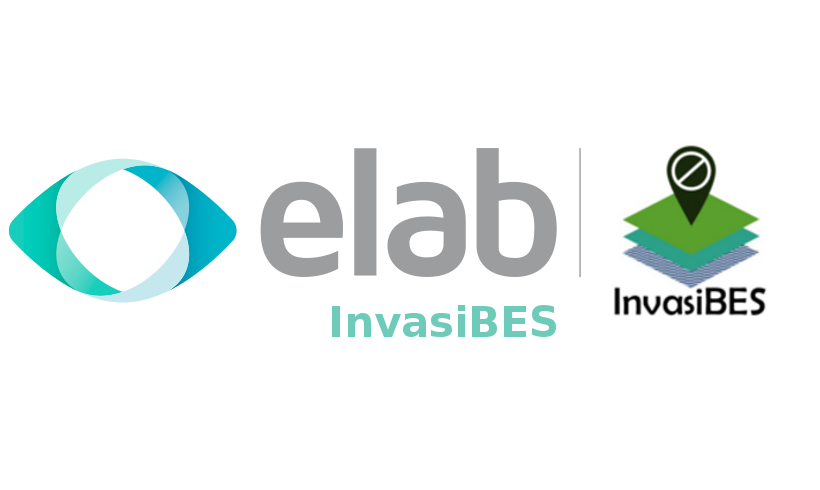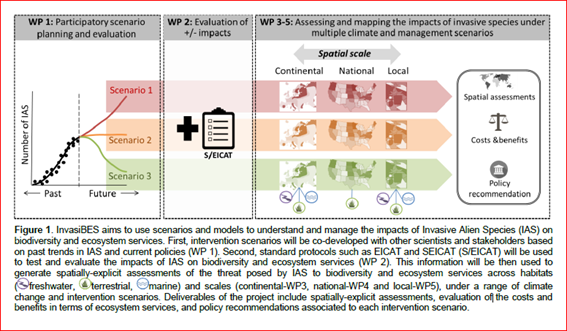Context
Invasive Alien Species (IAS) are considered a direct driver of biodiversity loss and have major impacts on supporting, provisioning, regulating and cultural services. Both the numbers and distributions of IAS are increasing in many parts of the world fostered by international trade and travel, with multimillion costs arising from economic loss in the agriculture, forestry, energy and health sectors, diminished delivery of ecosystem services, and cost of controlling and eradicating species. Climate change introduces an additional challenge for IAS management because species’ ranges are shifting in response to warming temperatures. Researchers and managers are under growing pressure to evaluate the costs and benefits of plausible intervention scenarios to control invasions and maintain ecosystem services. However, past research has mainly focused on the ecological factors determining the success of IAS, and changes in biodiversity after invasion, treating ecosystem services only marginally. To support policy and management, there is an urgent need to synthesize knowledge across habitats (terrestrial, freshwater and marine) and scales (continental to local), thereby providing a comprehensive understanding of the multi-faceted impacts of IAS.
Main ojectives
Using data and models across habitats (terrestrial, freshwater and marine) and scales (continental and local), InvasiBES aims to better understand and anticipate the impacts of IAS on biodiversity and ecosystem services and to provide tools for their management.
Main activities
InvasiBES will design three future intervention scenarios focused on prevention, control and eradication of IAS in Europe and the US, through a participatory process bringing together the expertise of scientists and stakeholders. We will also adapt current impact assessment protocols (EICAT and SEICAT) to consider both the detrimental and beneficial impacts of IAS on biodiversity and ecosystem services. This information will be combined with maps of the potential distribution of 100 of the worst IAS in Europe and the US under current and future climate change scenarios. Models and maps will serve to evaluate the costs and benefits in terms of ecosystem services of alternative IAS intervention scenarios. Focusing on three local scale studies that cover a range of habitats (freshwater, terrestrial and marine), invasive species (plants and animals) and ecosystem services (supporting, provisioning, regulating and cultural), we will use empirical field and experimental data to quantify the real-world impacts of IAS on biodiversity and ecosystem services and explore the recovery of ecosystems after the invader is removed. Spatial planning tools (InVEST) will be used to evaluate the costs and benefits of intervention scenarios at the local scale.
The results of InvasiBES are of high interest for policy stakeholders and practitioners who aim to invest IAS management resources efficiently and solve potential conflicts using science-based analyses of costs and benefits for ecosystems and society. For this reason, stakeholders will be invited to workshops and asked to provide feedback at several stages in the assessment of costs and benefits, and trade-offs, between ecosystem services and IAS management. Furthermore, knowledge and data produced in the framework of this proposal will support the implementation of European and US policies, strategies and actions to improve management of IAS, mitigate potential negative effects and, ultimately, promote sustainability.


